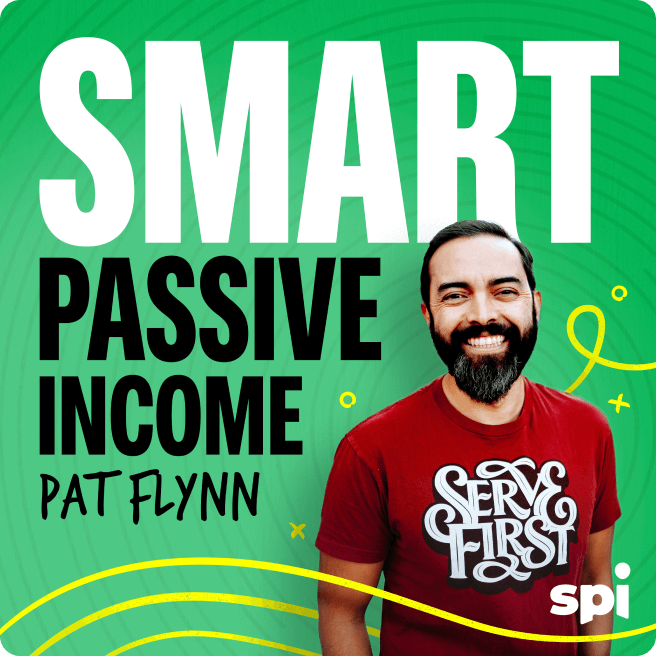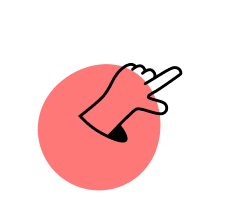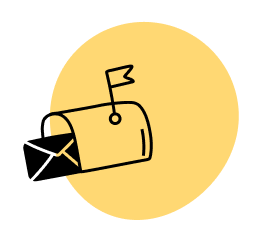Do you have a stream of ideas you’ve never put into practice? Are you stuck consuming information and accumulating knowledge without ever taking action? That’s where most of us are these days.
Learning has become a substitute for doing. Because it feels productive, we mistake gathering hacks and strategies for actual creation and work. We’re taking in too much data in all the wrong ways!
That’s why I wrote my upcoming book, Lean Learning. With my kids heading toward adulthood, I don’t want them or anyone else falling into this trap. I want you to invest in just enough quality instruction, take action, reflect, and repeat. I want us all to escape the kind of growth that lives in our heads but dies in our hands!
Because there’s more money in it, the creator economy keeps you stuck endlessly preparing to act. Your way out is the just-in-time information that finds you right when you need it. This is your key to progress and success without distractions!
If you want to help me spread this message, please consider pre-ordering Lean Learning ahead of its June 3rd release date. For more on how my book can help you achieve more by learning less, listen in on today’s episode!
You’ll Learn
- How learning that feels productive might be holding you back
- The importance of investing in quality instruction and taking action
- Why we mistake gathering information for actual implementation
- How to rediscover the natural learning ability you had as a child
- Why the creator system is keeping you stuck to maximize profits
- The four-part loop to break free from information overload
- Why I wrote my upcoming book, Lean Learning
Resources
- Today’s episode is brought to you by Incogni. Reduce the volume of spam calls and emails and lower your risk of identity theft with Incogni. For being a listener of this show, you’ll receive 60% off an annual plan, using the exclusive promo code smartpassive. Go to https://incogni.com/smartpassive
- Join the SPI Community to connect with like-minded entrepreneurs
- Help me get on the NYT best sellers list by pre-ordering a copy of my upcoming book, Lean Learning
- Subscribe to Unstuck—my weekly newsletter on what’s working in business right now, delivered free, straight to your inbox
- Connect with Pat on Twitter and Instagram
SPI 865: Why I Really Wrote Lean Learning (And a Sample Reading from the Book)
Pat Flynn: We live in the world obsessed with knowing more, more hacks, more tips, more frameworks. We scroll through productivity influencers. We download five different note taking apps, subscribe to newsletters about newsletters. There’s a podcast for every problem, of course, for every goal, a tool for every task.
You can learn anything at any time from anywhere. And yet, so many of us are stuck. Not because we aren’t learning enough, but because we’re learning too much in all the wrong ways. Learning has become a substitute for action. We mistake collecting, for creating, knowing, for doing curiosity, for commitment, and the worst part, this kind of learning feels good.
It feels productive. You feel like you’re making progress because technically you are, but it’s invisible progress, internal, passive, the kind of progress that lives in your head, but dies in your hands. I wanna tell you a story from my book Lean Learning, which comes out on June 3rd, and it’s about two colleagues that I had when I worked as an architect, Terry and George.
Every Sunday at 6:30 AM we’d meet at Corica Park Golf Course. Terry was obsessed with golf. His desk at work overflowed with golf magazine issues. He watched tutorials during lunch breaks, and he even kept a putter at his desk to practice in between meetings. George was different. Nothing in his office suggested he played golf. Monday through Friday, all business.
Based on appearances, you’d expect Terry to be the better golfer, right? I did too until I saw them play. Before each shot, Terry would recite tips from his latest golf content consumption. Keep your left arm straight, rotate your hips, follow through, and by the end of most rounds, these tips transformed into explicits. George’s approach, one practice swing, a slight pause, then boom, straight down the fairway, no overthinking, just execution. And at the end of each round, George consistently shot near par. While Terry and I lagged behind, I was more of a beginner, so I was just learning. And after one particularly frustrating game, I asked George his secret because I wanted to get better.
I invested in a good coach for a few lessons. He told me, learn exactly what I needed. Then stopped consuming golf content. I don’t try to learn more about golf. I just play. While Terry spent hundreds on magazine subscriptions, premium cable packages, and the latest equipment, George made one focused investment in quality instruction, then put it into practice.
This pattern extends far beyond golf. I’ve seen it in business, creative pursuits and personal development. The entrepreneur consuming endless business books, but never launching. The writer taking course after course, but never publishing. The fitness enthusiast, researching optimal workout plans, but rarely hitting the gym.
The common thread, mistaking information for implementation, and this isn’t a new problem, it’s just gotten worse. To understand how we got here, we need to go back to a time before we even called it learning. Remember, when you were a kid, you didn’t read books about riding a bike, you got on and fell, then got back up and tried again.
In my book Lean Learning, I tell a story about a teacher and their students who were suffering from a real world challenge. Their lunch area outside was too hot and there was no shade, and they found this out after they had to eat lunch outside when a bunch of ants invaded their classroom. And instead of just telling the students the answer on how to solve this problem, she let them figure it out.
They observed where the sun hit at different times of the day, and they noticed where the trees cast shadows. They asked questions, made drawings, took measurements, and eventually these four or 5-year-old kids designed a solution, a real physical shade structure. No curriculum, no research, just a problem, and a chance to solve it.
This is what I call natural learning. Learn just enough, take action, reflect and repeat. It’s kind of what kids do instinctively and what we adults have been trained to forget, and I know this trap intimately because I fell into it myself after losing my architecture job in 2008, I was desperate to figure out what to do next.
I started consuming everything I could find about online business. I subscribed to dozens of blogs and podcasts. I bought every business book I could find. I was always in search mode looking for that magical answer that would make everything click. But in retrospect, all I was doing was searching for something to hide behind, and that’s something was learning.
And here is where they get you because the system wants you to stay stuck. Think about it. The creator economy thrives on your almost action YouTube courses, newsletters, all of it is optimized to keep you preparing rather than doing, there’s more money in keeping you learning than getting you moving.
The scariest place to be is on the edge of action with just enough info to delay. You’re carrying mental weight you will never use and you feel tired before you even start. Many, many creators and businesses make millions of dollars by keeping you in this trap.
It’s something we at SPI try to get you out of. Inside of SPI our community, we want you to go full-time and graduate and not be able to need us anymore. That’s the idea.
Now in Lean Learning, I outline a simple four part loop to break free from information overload. Number one, identify what you want to accomplish next. Number two, learn only what you need to move forward. Number three, implement what you’ve learned. And number four, review and repeat.
Let me break this down with three practical strategies. Strategy number one, create information boundaries. You need to implement just in time information, which means to only seek information when you need it, for your immediate next step, not just in case. Next, you need to unsubscribe from almost everything and then declare information bankruptcy, and then only re-add resources that consistently provide value.
I had to do this when I got rid of every single podcast that I was once subscribed to, and I’m embarrassed to say that number was over 20, but now I only subscribe to two, and they’re exactly what I need for what I’m learning right now.
Next, create a For Later folder. So that when you find something interesting, but it’s not urgent information, you save it there. And here’s the kicker. You’re likely to never go back to it anyway, but it allows your brain to feel like it will be there when you need it, which in all likelihood you won’t.
Strategy two, ask the keystone question. Whenever you feel stuck or overwhelmed, ask yourself this. If this were easy, what would it look like? Thank you Tim Ferris for introducing this question to me because it has truly changed my life. This question cuts through complexity and reveals the simplest path forward.
When my buddy Caleb and I wanted to create a tripod for vloggers, which is now known as the SwitchPod, we asked this question at every stage. For prototyping, if this were easy, what would it look like? The answer cut shapes from cardboard boxes. For dimensions and size, if this were easy, what would it look like?
The answer, go to YouTuber events where there are YouTubers who could tell you if something is too big or too small, and ask those creators directly. For marketing. If this were easy, what would it look like? The answer build relationships with influential people, and this is how we were able to get Peter Mckinnon a YouTuber with millions of subscribers to on his own, create a video on our launch day. That enabled us to reach our $100,000 goal on Kickstarter within 12 hours.
Strategy number three, embrace voluntary force functions. A voluntary force function is one of the most nerve wracking, but powerful methods to learning something quickly and learning something because it matters.
Creating situations that force you to act with what you already know. When I learned to fish with a jig, for example, I purposefully left every other bait at home. With no other options, I had to figure out how to do it. When I was terrified of public speaking, but my friend needed help with his conference, I said yes, despite my fear.
And that force function has led me to speak on over 300 stages worldwide and counting. And look, you’re not lazy, it’s just perhaps you might just need permission. And in many coaching calls that I’ve done over time with students and listeners of SPI, that’s usually what it comes down to. Just permission.
Hearing it from somebody else, and maybe you’ve heard something that clicks with you today as far as why you perhaps haven’t seen the results that you are hoping to achieve yet, yet being the key word. The answer to all of this is, you know that all the information you need is out there. What you need is some direction, so you need to know what your next step’s going to be and you need to trust yourself, you’re gonna find the information when you need it. Again, the difference between just in time information and just in case information, and this topic is really important to me today for a few reasons. I started this episode, you might have noticed where it sounds a little bit different. I’m less conversational and more just commanding on this stuff. This is a first draft actually, of a script that will eventually become a video essay. I’m trying my hand at a video essay to market Lean Learning when it comes out. And the reason why this is so important to me right now is because every day I get a glimpse into the world that my kids are living in.
And my students at SPI are living in and new entrepreneurs and new creators coming into the field and the world that they’re entering in and the traps that they’re falling into of overlearning. And it’s not their fault when you get access to the internet. With the tools that we have today, you will be force fed information that you didn’t even know you needed.
You might be inspired. By more than one thing in an hour, and it’s hard to understand what to do next when there are so many opportunities and there’s so much information out there. Lean Learning in this book and the framework that I include in it, that is my call to action for my kids and my students and for you, it is the method, it is the framework that I’ve used to learn how to do a lot of new things and do them pretty well. And it’s not because I’m automatically good at these things. It’s not because I’m a genius, that’s for sure. And it’s also not because I’m lucky, it’s because I found a way that works, that has seemingly worked for many, many other people too, who I’ve taught this to.
My kids are learning this as we speak, but as they enter adulthood in the next few years, which is insane to think about. My son is 15, already will be 16 by the end of this year. I had to get these words out there. And you’ve just gotten a glimpse, a little bit of a taste of the kinds of things I talk about in Lean Learning.
But if you like stories that I’ve told here on the show before, stories about my work, my family, my constant failures. I think that you will enjoy this book. And look, I’m not a professor at some university. I am not a neuroscientist, so I can’t speak to a lot of the science behind learning like many others can. But I can speak to the results that I and many of my students have earned as a result of how we’ve learned.
And it’s no longer about information because of course, if information were the answer, we’d all be where we wanna be already. And most of us feel like we’re not even within reach. So what is it? It’s finding the right information at the right time. It’s about not confusing learning for doing. It’s about getting rid of procrastination and realizing that’s just an excuse.
It’s realizing that the imperfection is actually your advantage, and that mistakes are your vehicle for learning. Therefore, by waiting, you are delaying the learning that can actually happen from doing.
I invite you here in April. Now we are just a couple months away from the launch of my new book, my first book in six years, and my very first traditionally published book, and it’s one that I hope will compete with some of the best out there in terms of the impact in the world that it can make.
This is the most important thing to me right now, which is why I’m going to ask you directly to please pre-order the book and help out to spread this message and also absorb it yourself. If you go to LeanLearningBook.com, again, that’s LeanLearningBook.com, you will see some more information about the book, of course, as well as some bonuses that are available if you pre-order before the book launch. And the book launches on June 3d and it would be my dream to see it on the New York Times bestseller list, not because it would come with accolades and awards and any of that stuff. That stuff does not matter to me. What matters is that this gets out there in the world that we live in today because it is so scary and I want the best world for everybody who’s living in it right now because it’s such an amazing time and it’s a time that most people are not enjoying. This book ultimately will unlock that joy for you. Just like I’ve recently unlocked a lot of joy in the Pokemon space. Something I knew nothing about, but I have lean learned my way into it, and now I’m having the time of my life and I’ve lean learned my way into working with a traditional publisher, and I have to thank Simon and Schuster and Atria, and Stephanie and everybody over there who’s helped out.
This is a special moment. Thank you. Thank you so, so much. LeanLearningBook.com, this is the official pre-order release announcement and the book again comes out June 3rd. And if you could do anything to help share and spread the word, I would be forever grateful. Thank you so, so much. I appreciate you.





